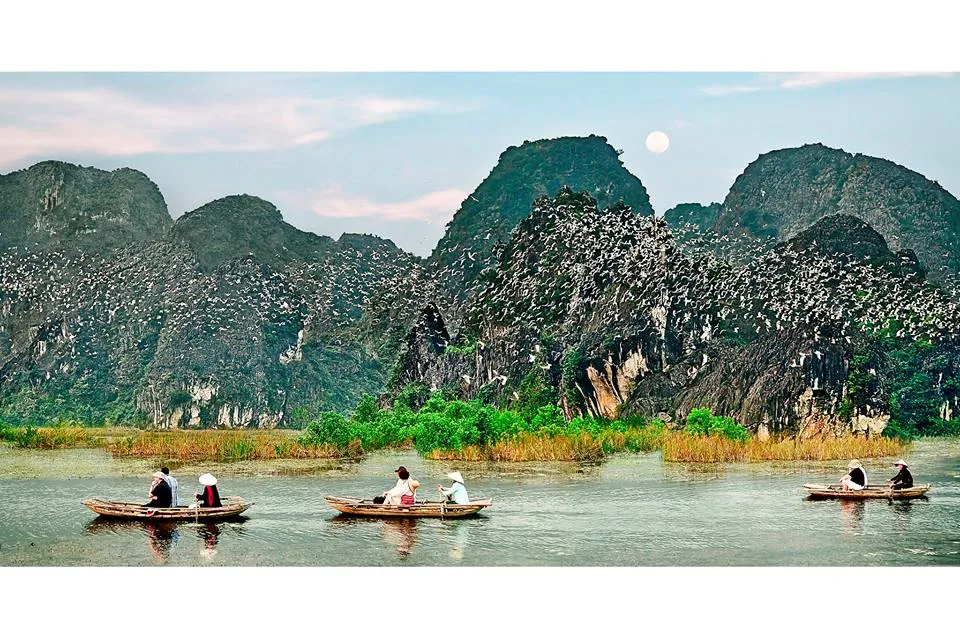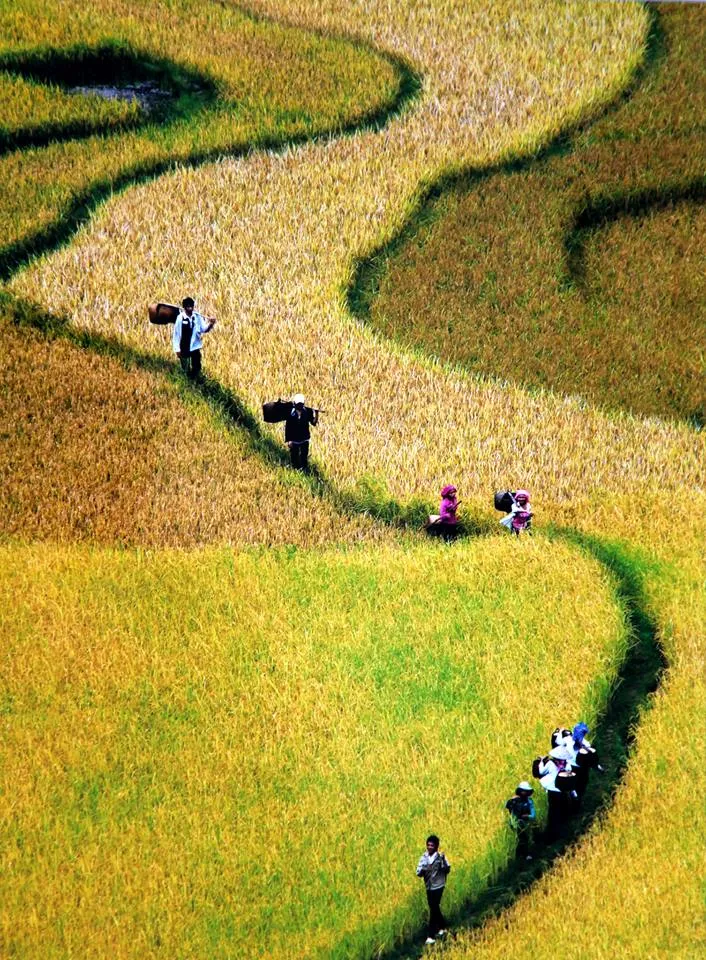Since the 1980s, ecotourism has emerged as a global trend, attracting significant interest from countries and travelers alike. The United Nations World Tourism Organization (UNWTO) has emphasized its crucial role, proclaiming ecotourism as “the key to sustainable tourism development” (2002). Indeed, ecotourism not only generates economic benefits but also contributes to environmental conservation, preservation of indigenous cultures, and the development of local communities.
Vietnam, with its abundant and diverse natural resources, is considered an ideal destination for ecotourism. However, realizing this potential still faces numerous challenges. This article will delve into the current state, potential, and solutions for developing ecotourism in Vietnam sustainably.
Vietnam’s Exceptional Ecotourism Potential
Vietnam boasts incredibly rich biological resources, with approximately 21,000 plant species and nearly 12,000 animal species, many of which are rare and endemic, listed in the global Red Book. The established and maintained system of national parks, nature reserves, and biodiversity conservation areas provides favorable conditions for ecotourism development.
In 2015, Vietnam had:
- 31 national parks
- 64 nature reserves
- 16 species-habitat conservation areas
- 55 landscape protection areas
Vietnam ranks 16th globally in terms of biological resource diversity and is among the top 10 most biodiverse centers in the world. UNESCO has recognized 10 World Biosphere Reserves in Vietnam, along with 8 Ramsar sites of international importance.

Diverse Ecosystems for Ecotourism Experiences
Scientists highly value the diversity of ecosystems in Vietnam, creating ideal conditions for ecotourism development. Notable ecosystems include:
- Terrestrial Ecosystems: Characterized by various forest types, grasslands, high mountains, limestone mountains, and magnificent cave systems.
- Wetland Ecosystems: Encompassing coastal mangrove forests, lagoons, lakes, swamps, rivers, streams, canals, especially in the Red River Delta and Mekong River Delta.
- Marine Ecosystems: Featuring coastal sandy beaches, diverse coral reef and seagrass ecosystems.
- Unique Agricultural Ecosystems: Paddy fields, terraced fields, and orchards are distinctive highlights.
Furthermore, the indigenous cultural values cultivated over generations are also precious resources for ecotourism in Vietnam.
Ecotourism in Vietnam: Early Steps
Ecotourism emerged in the late 1990s and is gradually establishing its position in Vietnam’s tourism industry. National parks and nature reserves such as Phong Nha – Ke Bang, Cat Ba, Hoang Lien, Cuc Phuong, Nam Cat Tien… are becoming attractive destinations. Ecotourism orchard areas in the Mekong Delta are also very popular.
The development of river, lake, and island ecotourism tours such as Mekong River ecotourism, Ba Be Lake, Cu Lao Cham, Tra Su cajuput forest… also contributes to diversifying ecotourism products.
Although still in the early stages of development, ecotourism in Vietnam has achieved encouraging results, reflected in the increasing number of tourists participating in ecotourism activities.
International tourists participating in ecotourism experiences in Vietnam mainly come from Western European, North American, and Australian markets, with recent additions from Japan and South Korea. They often travel in small groups, are highly conscious, and clearly exhibit characteristics of community-based ecotourism.

Main Ecotourism Activities in Vietnam
- Sightseeing and Picnics: Exploring wildlife in national parks, hiking in forests, bird watching, mountain climbing, and snorkeling to see coral reefs.
- Cave and Grotto Exploration: Discovering the majestic beauty of natural caves.
- Agricultural Ecosystem Visits: Experiencing orchard life in the Mekong Delta, admiring terraced fields in the northern mountains, and visiting fruit gardens in the Red River Delta.
- River and Lake Cruises: Sightseeing and exploring ecosystems on the Mekong River, Red River, Hoa Binh Lake, Ba Be Lake, etc.
- Ecosystem Research and Study: Studying biodiversity in national parks, nature reserves, and caves.
Limitations to Overcome
Currently, trips to natural areas in Vietnam are still mass tourism oriented, not genuinely ecotourism. Large numbers of tourists often negatively impact the natural and cultural environment. Planning and zoning for ecotourism development are still inadequate because Vietnam lacks a specific strategy for this sector.
The scale and form of ecotourism activities are still small and indistinct. Investment in ecotourism development is low, mainly relying on support projects from international organizations.
Insufficient market research leads to unclear identification of target markets and ecotourism tourist segments, coupled with weak ecotourism promotion and advertising.
Additionally, the awareness of tourists and locals regarding environmental protection is still low, leading to negative phenomena such as deforestation, illegal wildlife hunting, and littering.
Lack of investment in specialized infrastructure for ecotourism development, with construction not adhering to principles, disrupts environmental landscapes. The role of local communities is not valued enough, and tourism benefits do not reach them adequately.
Opportunities and Solutions for Sustainable Ecotourism Development
To develop ecotourism sustainably, Vietnam needs to focus on the following solutions:
- Develop Specific Strategies and Planning: Clearly define orientations, goals, and solutions for ecotourism development.
- Increase Investment: Invest in infrastructure and specialized technical facilities for ecotourism, while conserving and promoting resource values.
- Raise Awareness: Promote and educate to raise environmental protection awareness among tourists and local communities.
- Develop Diverse Tourism Products: Create unique ecotourism tours tailored to specific customer markets.
- Boost Promotion and Advertising: Promote Vietnamese ecotourism in international and domestic markets.
- Enhance Local Community Participation: Create conditions for local communities to participate in tourism activities and benefit from tourism.
Conclusion
Ecotourism is a promising direction for Vietnam’s tourism industry. To effectively harness this potential, close coordination between levels and sectors, active participation of local communities, and environmental awareness from tourists are essential. With these efforts, ecotourism in Vietnam will become increasingly sustainable, contributing to the socio-economic development of the country. Are you ready for an ecotourism experience in Vietnam?